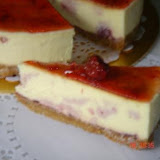Mount Kinabalu is the highest mountain in South East Asia (4095m/13,435 ft). We have heard and read so much about it and when we talk about mountain climbing, this question always been asked "have you climb Mt. Kinabalu?" Some of our friend have scaled it successfully and some have not and some have been there more than one time. Those who don't reach the Low's Peak will be given a black and white certificate. Despite its height it is one of the easiest mountain to climb and even my father (64 years old) got a color certificate, so it is "sap sap sui" (easy).
On Oct 2004, we decided to scale this beautiful mountain. I won't call it a camping trip because no heavy backpack to carry, no need to pitch tent and not many uphill and downhill to reach the peak. That is the reason for thousands of all ages and fitness levels scale it every year. We booked 2 air tickets from Air Asia during the offer period at RM230 per person (to and fro) and book our stay for Laban Rata (base camp just before the peak) through telephone. We reach Kota Kinabalu one day earlier and stayed overnight at one of our friend's house
After the registration and paying the necessary fees, Catherine R. sent us to the Timpohan gate (1800m/5900ft), entry point to start of climb and agreed to pick us the following day after the decent.
The walk to Laban Rata hut can be accomplished in 3 to 6 hours and it must always be accompanied by a registered guide. Our guide name is Dawat, he share his experience as a porter before qualifying as a guide. Being porters they can carry baggages weighing between 40-60 kilos. Climbing at such high altitude you have to take it easy (you have plenty of time) to avoid high altitude sickness where you will suffer headaches and dizziness. So we took our time to trek up and took many photos. We started around 10am and reach Laban Rata around 2pm. It was bright and cold up there. After checking in and got our heated room which is quart sharing. Laban Rata restaurant provides a la carte food as well as buffet spread. A good advice is to eat moderately. We ordered hot drinks and shared one portion. Later we went out to take sun sets photos. We were advised by our guide to rest early becau
When we reach Laban Rata hut, we slept for about 2 hours before descending all the way down to Timpohan Gate. We should have stay another night. After 3000m of descending, most climbers will have sore legs (knee joint, foot and toes). When we reached Timpohan Gate it started to rain heavily and we have to wait for a while for a van to transport us to the headquarters where the guide will report our successful climb to the Low's Peak and only then the certificate will be given. Later Catherine took us to Poring Hot Springs where we spent a night there. We visited the local Kadazan farmers the next day and had lunch with them and they were surprised to see us able to walk effortlessly after the Mount Kinabalu climb.Our legs felt very sore but bearable. The vegetables here are fresh and tasty. We were served 'Tarap' a local fruit. You must visit the Tamu (open market) where the local farmers will display and sell their farm produced together with other handicrafts. Any visit to Kota Kinabalu (State capital of Sabah) should include Gaya Street which is famous for selling all types of goods ranging from food to local products.
Have fun and be happy!
Jul 9, 2007
Mount Kinabalu, Sabah, East Malaysia
Posted by
Kc and Yk
at
3:07 PM
![]()
Labels: Mount Kinabalu Sabah
Subscribe to:
Post Comments (Atom)





No comments:
Post a Comment